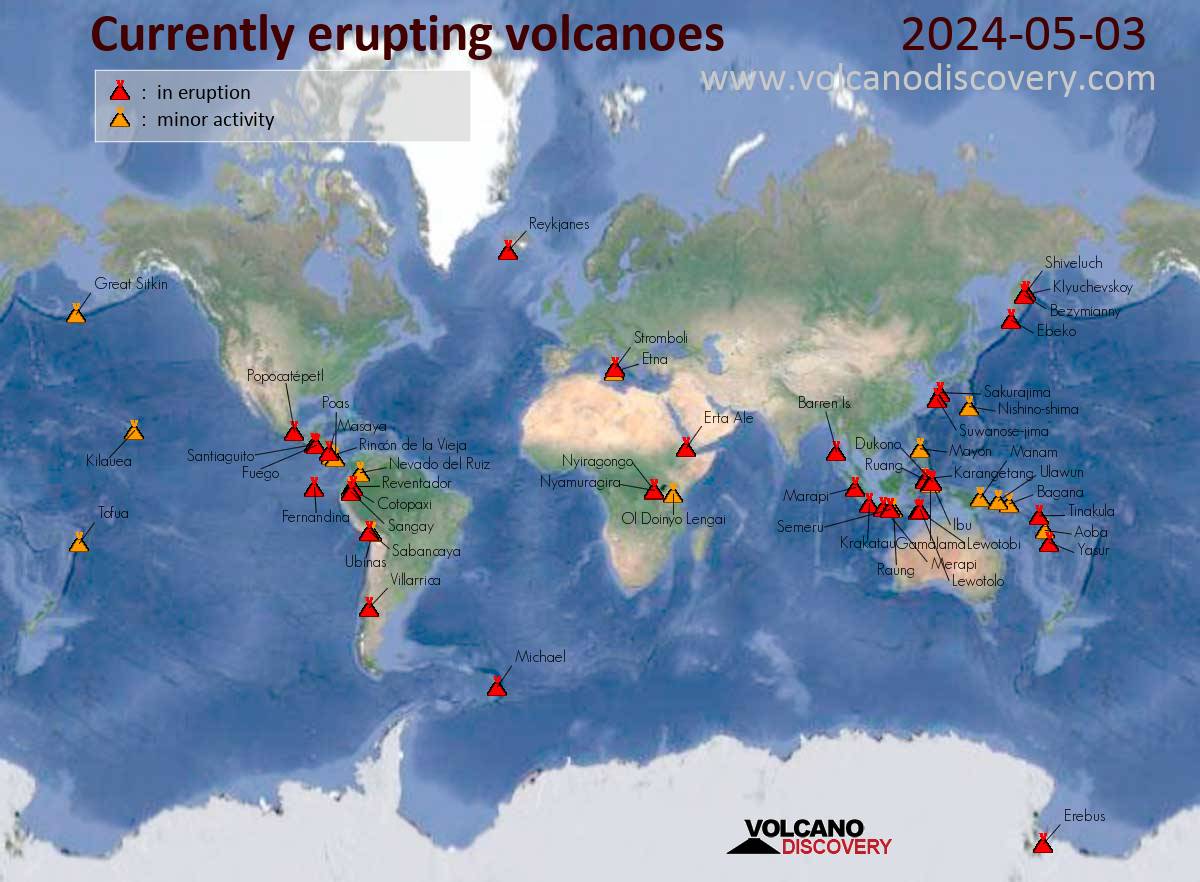Chave Weather.
A particularly spectacular blast from Italy's Mount Etna volcano belched out a towering cloud of ash and lava stone Sunday onto Sicilian villages, the latest in a series of explosions since mid-February. Italy's national geophysics and volcanology institute INGV said the powerful explosion at 2 a.m. local time was the 10th such big blast since February 16, when Europe's most active volcano started giving off an impressive demonstration of nature's firepower, colouring the night sky in hues of orange and red. Increasing tremors rattled the mountain throughout much of the night. Ash and small lava stones rained down on eight villages on Etna's slopes Sunday morning, while lava flowed from the southeast crater slowly down an uninhabited side, as it has been doing for the last three weeks, the institute said.
The column of ash and lava reached a height of 10,000 meters (33,000 feet) on Sunday, according to scientists who monitor volcanic activity with specialized instruments from an observatory at Etna in eastern Sicily. Locals swept ash and lava stones from their front steps and balconies. They have taken to covering cars parked outdoors with carpets, blankets and sheets of cardboard to make cleanup easier after each blast. Winds helped carry the ash eastward, INGV said. No injuries or serious damage have been reported after the recent blasts. Geologically active, Etna occasionally becomes particularly noisy and explosive as it has been lately. By midmorning, Etna's latest display of activity had slowed somewhat with the lava flow ending, although the volcano was still puffing out a "weak emission of ash" from the southeast crater. A few hours later, the volcanic tremors picked up again, the INGV said in a statement. The INGV scientists say there is no way of predicting when this current round of particularly robust volcanic activity might subside.
Volcano activity has been just impressive as the record-breaking number of major quakes in the first 67 days of 2021. As of yesterday 49 volcanoes around the world are erupting or showing signs of activity. In 15 years of reporting volcano activity, I can't remember this many volcanoes around the world showing this much activity.
In all 42 major quakes, mag 6 or higher have rocked the planet in just 65 days and we could be well on the way to recording the highest number ever recorded in a year which was 207 in 2011, the year of the Fukushima disaster. What makes the incredible number even more exciting is that the majority of the major quakes have been located along the eastern margin of the Australia plate. 27 of them in fact. What makes this total more incredible is that in the same period in 1921, a hundred years ago only 7 major quakes, mag 6 or higher had been recorded globally according to the USGS Data Base. Something big could well be about to unfold along with the "record-breaking" start to the year along the eastern margin of the Australia plate and the timing could well be crucial with the 10th anniversary of the Fukushima disaster next week.
Of the 42 major quakes recorded this year only two, a mag 6.2 recorded in Mongolia in January and a mag 6.3 recorded in Grecce earlier this month have been outside the Pacific Ring Of Fire. Stranger still 36 of the 42 have been on the Western side of the Pacific Ring leaving the Western Coast of the US still waiting for the "big one!"

1 comment:
how much is the financial crisis after this
Post a Comment